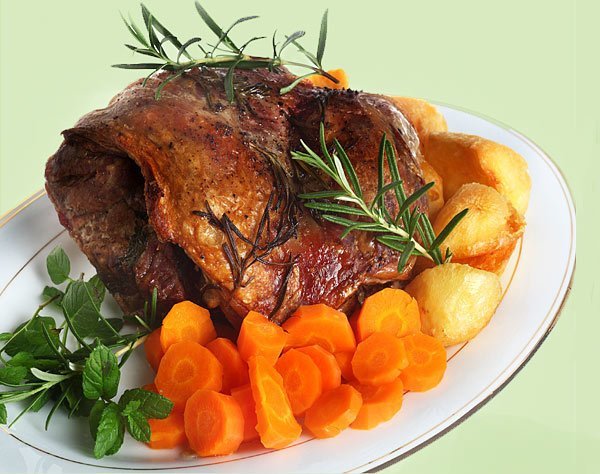Traditional Dishes Of Easter In Hungary

Although today Easter is about bunnies and Easter eggs and giving gifts, originally it’s the celebration of Jesus Christ’s death, resurrection and ascension. It is the end of the long Lenten season, the first time when religious people are allowed to eat meat. The word Easter means “Húsvét” in Hungarian, and literally means “a hús vétele” or in English, taking meat. But what do Hungarian people eat on this holiday?
The most traditional Hungarian Easter food are lamb or ham, braided loaf and eggs. Catholic people take these food to the church on Easter Sunday or the day before to hallow them. The hallowed ham, loaf and eggs are the traditional Easter breakfast of Hungarian Catholics. The remnants and crumbs of this breakfast is not thrown to the garbage bin, but is burned. In old times, people rushed home with the hallowed food as fast as they can, and used the remainders of them for magical purposes. The crumbs were strewn in front of the chickens so they would lay more eggs in the following year. The bone of the hallowed ham was hanged to a fruit tree to make it more fertile.
In different areas, several more kinds of food were also part of the hallowed Easter food, like horseradish, sausage, pepper, butter, bacon, cottage cheese or some cake.
Easter meals have symbolic meanings. Easter lamb is the sacrificial food of the feast, which the Jews of the Old Testament ate with bitter salad and unleavened bread in memory of their liberation from Egypt. When the tenth plague happened and God killed every first born of Egypt, the Jews had to differentiate themselves so they marked their door frames with the blood of a lamb. Lamb is also symbolic because Jesus is called the Lamb of God. Sacrificing lambs is a symbolic tradition of the Bible and of Christian religion. Ham is also one of the traditional Easter food for a long time, and until now it has replaced lamb in most places. Ham is boiled and salted before the feast, but most families now buy them ready-to-serve on markets. It’s often eaten with pickled horseradish.
Eggs are the symbol of fertility, life and rebirth. Christians believe that as a new life arises from the egg, it’s the same as Jesus resurrects from his tomb for the salvation of men. Another perception is that the eggshells symbolize the Old Testament and the interior the New Testament. Its red color symbolizes the heart and blood of Jesus Christ, but this motif has several versions. Some people believe that the origin of red eggs comes from the legend that when Jesus was crucified, a woman went to the cross with eggs in her basket. She put the basket to the ground, knelt down and started to pray, and a drop of blood fell to the eggs and tinted them red. One way or another, red eggs symbolize fertility and the sacrifice of Jesus, and are present today in every Easter breakfast. In former times the remnants of the eggs were also used for magical purposes, in some areas the eggshells were plowed into the ground to make it fertile. In other areas, the egg were put in the seed bag before sowing to make the seeds prolific. Traditionally, the eggs are boiled and painted red before eaten, but different types of filled eggs are also popular dishes at Easter.
Beside these meals, there is no uniformly traditional Easter food, it changes from house to house. Favored dishes are roasted meat, vegetables, salads and cakes, and everything that early spring offers – endive, lettuce, radish, kohlrabi and many more vegetables.
Easter is a traditional family holiday in Hungary. Though the meal served on the Easter lunch table can be different, there is one thing in what almost every household is identical: that the food is the most delicious when it’s enjoyed together with the whole family.
by Zsofia Luca Szemes
Photo: www.magyar-hirlap.ro, www.magyar-hirlap.ro
Source: https://darkgoldenrod-woodcock-377971.hostingersite.com/






